Notes Toward a New Language: On La Borde
BY Cynthia Cruz
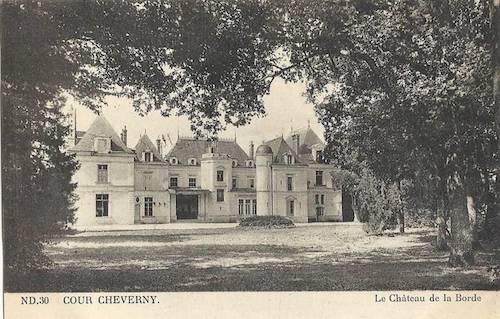
In 1953 the psychiatrist Jean Oury bought the castle Chateau La Borde, an hour from Paris. Oury bought the chateau in order to open an asylum that would, he hoped, be true to the word “asylum.” The word “asylum” derives from the Latin asylum “Sanctuary,” from Greek asylon “refuge.” The term “seeking asylum” suggests that one is seeking safety from persecution. That Oury bought a chateau and not a hospital, prison, school, or apartment complex is radical. A chateau is a “castle”–a dream house, with endless halls and endless rooms. This stands in stark contrast to the architecture of psychiatric wards which are not dissimilar to prisons.
At La Borde the patients had free rein of the chateau as well as the grounds, they were able to walk anywhere, exploring as they wished. This aspect is of extreme importance--psychiatric wards and hospitals are by definition institutional, sharing more in common with prisons than La Borde which is essentially a mansion. In addition, the patients shared responsibilities with the staff and participated in communal meetings. In fact, Felix Guattari, who was invited by Oury to serve as co-director, created what was called "the grid," a system he devised that allowed him to switch everyone's responsibility's at random. The structure of La Borde was non-hierarchical: the doctors and nurses did not wear uniforms, nor did the staff or the patients. The patients participated in the running of La Borde, the staff drew blood and performed other duties usually relegated to the doctors and nurses and the doctors and nurses washed dishes, and so on. The objective of the clinic was not to “cure” the patient but to encourage the individual to participate in her own self-creation as if she were an artist.
La Borde was based on the principle that psychotics cannot be treated until the entire infrastructure of psychiatry is changed. For Guattari, the goal of “institutional psychotherapy” was to learn alongside the patients a new way of relating to the world. In essence, the institution was a mutual think-tank, a community of learning for everyone. In “La Borde: A Clinic Unlike Any Other,” (from Chaosophy: Texts and Interview 1972-1977) Guattari wrote:
Since 1955 I have worked at the clinic of La Borde; I was invited to collaborate on this experiment by my friend Jean Oury, who is its founder and principal director[…] It was then that I learned about psychosis and the impact that institutional work could have on it. These two aspects are profoundly interconnected, because psychotic traits are essentially disfigured in the context of traditional prison systems. Psychosis shows its true face only in a collective life developed around it within appropriate institutions, a face that is certainly not one of strangeness or violence, as one all too often believes, but one of a different relation to the world.
Guattari’s idea that “psychosis shows its true face[…] a face that is certainly not one of strangeness or violence, as one all too often believes, but one of a different relation to the world” is both refreshing and profound because here he is suggesting that when a person experiences psychosis her psychosis changes according to her surroundings and, therefore, treating such a person with fear by locking her up, keeping her in restraints, overmedicating her and other methods of suppression can only serve to change the psychosis to a psychosis of fear and paranoia. Conversely, giving that same patient space--both psychical and mental--and not treating her via oppression, will change psychosis once again. Guittari is able to see the person with psychosis and relate to her as one person relating to another, rather than someone with authority imposing his power on her. Furthermore, he is suggesting that she has a different way of experiencing the world without suggesting that her’s is inferior. Interestingly, this is exactly the same idea Deligny writes of with regard to his work with autistic children. In his essay, “La Borde: a Clinic Unlike Any Other,” from Chaosophy: Texts and Interview 1972-1977 Guattari writes:
Unfortunately, in France and many other countries, official orientation is toward reinforcing segregation: the chronically ill are placed in establishments for the “long term,” which means, in fact, leaving them to crouch in isolation and inactivity; acute cases get special services as do alcoholics, drug users, Alzheimer’s patients, etc. Our experience at La Borde has shown us, on the contrary, that a mixture of different nosographic categories and regular encounters between different age groups could constitute nonneglligable therapeutic vectors. Segregative attitudes form a whole: those one encounters among mental illnesses; those that isolate mentally ill from the “normal” world; those one finds with respect to “problem children”: those that relegate the old to a sort of geriatric ghetto—all participate in the same continue where one finds racism, xenophobia, and the rejection of cultural and existential differences.
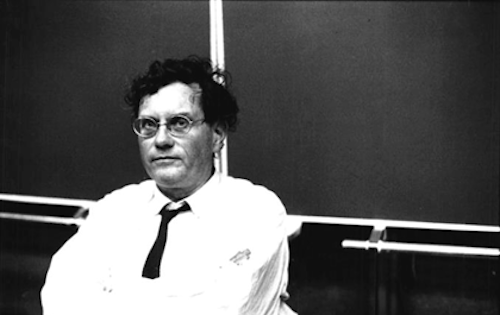
Guattari did not believe, as some others from the Anti-psychiatry movement with which he was affiliated, that mental illnesses were a myth but, rather, that the power structures inherent in the way psychiatry is practiced in the west is problematic due to its tendencies toward oppression. Examples of such oppressive means included (during Guattari's lifetime): electro-shock therapy, insulin shock therapy and brain lobotomies. Current means include: over medication, the use of medication to subdue, restraints, solitary confinement, forced hospitalizations. In addition, adults are given "time outs," and are punished by having their "privileges" revoked. In fact, the very power structure inherent in the treatment of the mentally ill with its tendency toward infantilization is problematic. Furthermore, aside from being oppressive, Guattari posits that the very methods used to treat the mentally ill are actually detrimental to the treatment of patients.
La Borde is still open today. In 1996 the filmmaker, Philbert Nicolas made a documentary of La Borde, an incredibly beautiful film:
Guattari lived at La Borde with his wife, two sons and daughter, Emanuelle. Last year Emmanuelle (“Manou”) published a beautiful book of her experience growing up at La Borde, I, Little Asylum, published by Semiotexte:
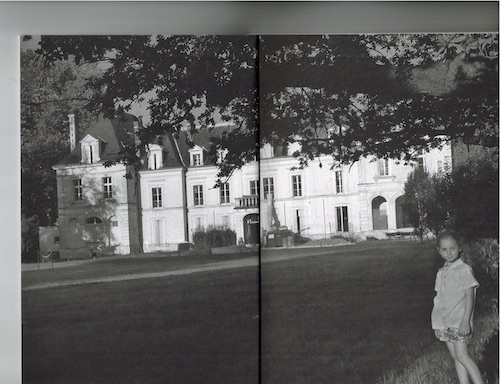
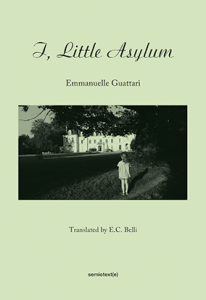
The space given to the patients—to walk wherever they wished, to take on a multitude of jobs of various hierarchical values—is necessary in order to move and to think, and, ultimately, become themselves. This is a luxury, not one afforded the poor, the migrant, the incarcerated, the elderly, the sick, and so on. And this is what ought to be afforded everyone.
Connected to this idea of space and moving about is, of course, the body. To be able to walk, to make one’s mark with one’s own body—to take up space—these are all, again, essential. Movement is connected to the body and to creativity. To force a person to live within a tiny cell of space due to poverty, incarceration, being forced into a “home” (group home, nursing home), or the “projects,” is to confine the minds and bodies of those who are forced to live in these small spaces or cells, which is to isolate, alienate, and further “Other.”
To move through the world, to walk where and for how long one wishes, is to draw the borders of one’s world and one’s body, it is to make a mark. With Robert Walser, Walter Benjamin, Büchner’ Lenz, and Hölderlin—walking is a means to unravel the mind—to piece one’s mind back together or, conversely, to finally come undone. Georg Büchner's novella fragment based on the diary's of Jakob Michael Reinhold Lenz, a friend of Goethe's. The novella chronicles Lenz's experience of suffering from a mental illness. Here is the opening paragarpah of Lenz:
The 20th, Lenz walked through the mountains. Snow on the peaks and upper slopes, gray rock down into the valleys, swatches of green, boulders, firs. It was sopping cold, the water trickled down the rocks and leapt across the path. The fir boughs sagged in the damp air. Gray clouds drifted across the sky, but everything so stifling, and then the fog floated up and crept heavy and damp through the bushes, so sluggish, so clumsy. He walked onward, caring little one way or another, to him the path mattered not, now up, now down. He felt no fatigue, except sometimes it annoyed him that he could not walk on his head. At first he felt a tightening in his chest when the rocks skittered away, the gray woods below him shook, and the fog now engulfed the shapes, now half-revealed their powerful limbs; things were building up inside him, he was searching for something, as if for lost dreams, but was finding nothing. Everything seemed so small, so near, so wet, he would have liked to set the earth down behind an oven, he could not grasp why it took so much time to clamber down a slope, to reach a distant point; he was convinced he could cover it all with a pair of strides.
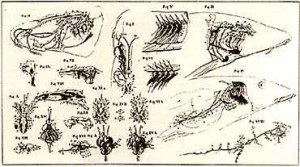
Both Walser and Benjamin had a propensity toward making microscopically tiny marks on paper, taking up all the space, using the tiniest handwriting as if they were moving their bodies through a fenced-in garden, marking the soil with their feet as they moved along. It is kind of walking or taking up space but on the page.


When I was teaching for Teachers & Writers Collaborative some years back I had the honor of working with a young boy in a school in Harlem who everyone else at his school had given up on. That semester I was bringing in a poetry workshop in which the students would use comics—they would write poetry by making small cells of drawings, each cell becomes a unit of poem. On my first day of class I was stopped by two adults who warned me not to waste my time on this one particular 1st grader. The class was a class of what was then termed “emotionally challenged” students. On the wall near the front door was taped a piece of paper with the names of children and, across from their names the matching list of meds they were on. The child I was warned not to waste my time with was on, along with a long list of other pharmaceuticals, Risperdon. He was in the second grade.
When I got to class it was clear why everyone had warned me not to work with the boy—his thoughts moved directly from his mind to his mouth—he was full of energy and one of the most creative students I have ever had the chance to work with. I sat down, tore out a piece of paper and began scribing down what he was saying. I found out later that he lived in a shelter with his mother who was a crack addict and his little bother. I couldn't keep up—his words streamed from his mouth as if they were in fact an SOS—
His words, his poems, were about Wiley Coyote—they were about violence and fortitude, fear and passion. I know something about poverty and institutions but I cannot begin to profess to know what his experiences of the world were. His language was his language, the language of his own life experience and of his inner world. It was my job to get his words down on the page, listen to him, hear him, and by doing all of this demonstrate to him that his voice and his language matter, that he was making his mark, taking up space. Though he was not able to write for himself (I wrote his words down for him), his voice was intact and through his voice he was able to move through the world--past the cell of the classroom, the cell of the shelter where he lives with his mother and brother, and past and through the cell of his mind.
Cynthia Cruz is a poet, novelist, and nonfiction writer. She is the author of the poetry collections...
Read Full Biography

